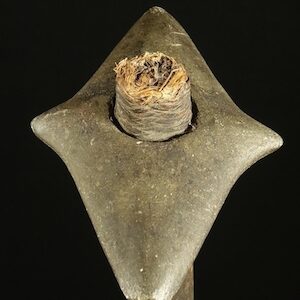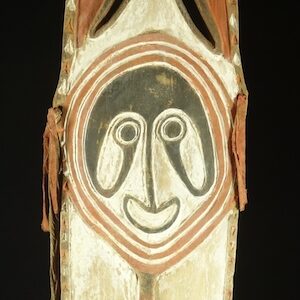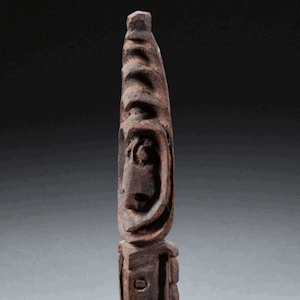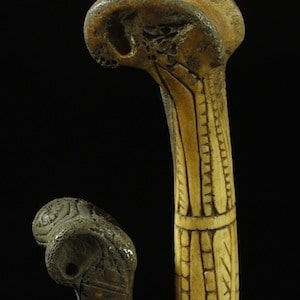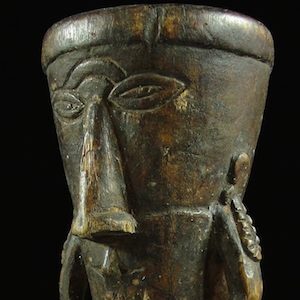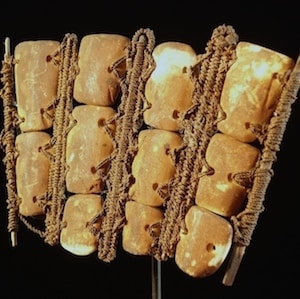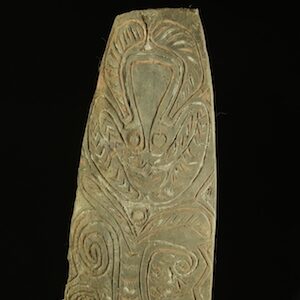Austral Island paddle
Early round pommel Austral Island paddle for sale



Object Type: Dance paddle
Locality: Austral Islands Polynesia
Artist: Unknown
Circa: 1800 -1820
Height: 90 cm
Description: This is one of the more collectible early small paddles with a rounded pommel. it has 8 small dancing tiki figures on the pommel none of which show damage.
The blade has been reshaped sympathetically to the original incised designs
According to the expert on these paddles : Rhys Richards in The Tribal Arts Magazine (2012, pp 141 – 145),
“Though widely called ‘paddles,’ these objects are not functional paddles. They are ‘paddle-shaped,’ but their sizes are too extreme; their shafts are too weak, and they are thoroughly unsuitable for use as paddles. Consequently, it has been assumed that they were emblems of rank or status, for ceremonial rather than functional use… Austral Island paddles are dated roughly between 1820 – 1840, mostly made probably on the Island of Raivavae, and are generally described as made for-trade items, with their original use being treated as something of a mystery… In general older Austral island paddles tend to be smaller and have round pommels. Square pommels and larger paddles are later in production. This example is smaller and has a rounded pommel. Based on the glossy dark brown patina, rounded pommel, and smaller size I would date it to late 1700s – early 1800s.
Price: SOLD




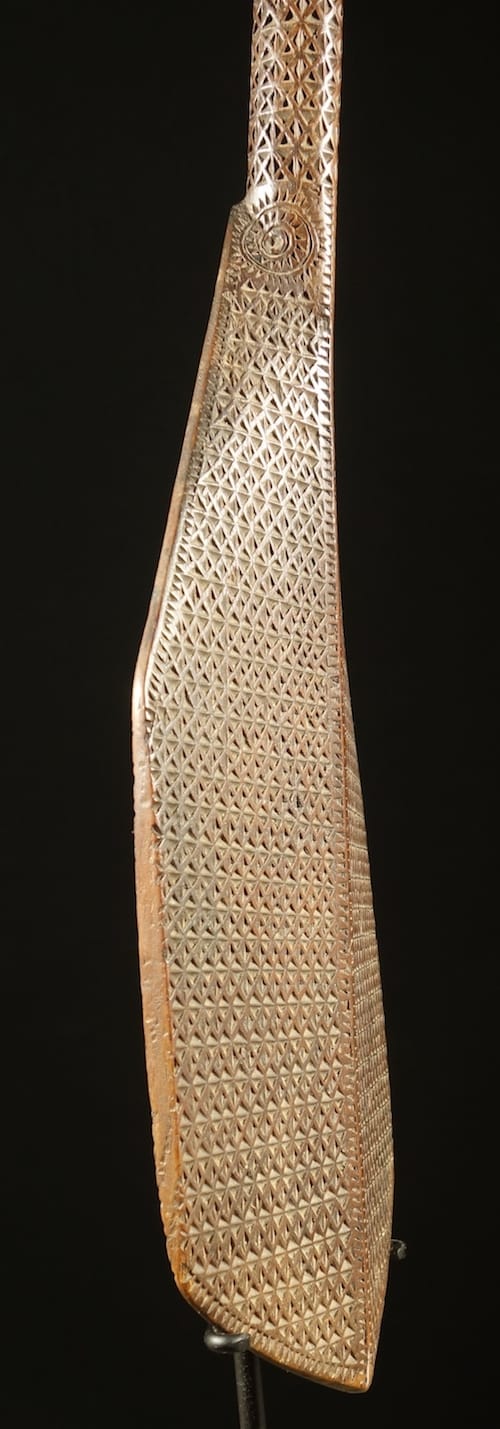
Other Art objects Available
Austral Islands paddles
The Austral Islands are a group of islands located in the South Pacific, part of French Polynesia. When you mention an “Austral Island paddle,” it is likely you are referring to a traditional paddle from this region.
Paddles have been an essential tool for navigation and transportation in the Austral Islands. Crafted by skilled artisans using local materials and techniques.
Austral Island paddles are typically made from wood, such as hardwood or driftwood found on the islands. Carved and shaped to create a functional and ergonomic design. The size and shape of the paddle can vary depending on its specific use, whether it’s for propelling a canoe, fishing, or ceremonial purposes.
Aesthetically, the paddles often feature intricate carvings and decorations that represent cultural motifs. The carvings can be geometric patterns, human or animal figures, or other meaningful designs.
These paddles hold cultural significance. They can also serve as decorative items or souvenirs for visitors interested in Pacific Island culture.
Like many other artifacts, this object is not just an artifact it is art. Collectors from around the world collect art from different regions. This art is Tribal art. In reality, Tribal art or ethnographic art is art from around the world.


